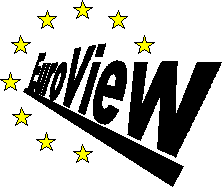
By now you have a clear idea of what information you want to put in the directory. The initial move toward achieving this is locating where that data is currently held in your organization. The telephone and e-mail databases are almost the certainly the first stop. You might also want to consider the human resources database. Now would be the right time to consider some management issues. Firstly, how will the directory be placed in the organizational infrastructure Will it become the master source for some of the databases already mentioned It might make sense to master telephone numbers in the directory. The e-mail database will almost certainly be dependent on the mail system in use. The directory may not provide the level of database functionality required by a human resources department (the directory, for example, cannot replace a relational database). The introduction of the directory can be an opportunity to rationalize existing databases and their associated management functions. Whatever you decide, bear in mind that your plans will require the co-operation of people currently in charge of the databases. Doing what you can to involve them in the project early on could make life easier for you later!
The next priority is to find suitable ways of merging the information in each of the data sources. The information content and format of these databases is likely to vary considerably and so this will present a problem. Tools for converting the source databases into the format required by the directory may have to be written specifically. Once conversion tools have been created, tools for merging the data streams will need to be found. This issue is at once difficult and highly important. Reliable merging will be required for the ongoing management task, but is likely to problematic due to inconsistencies in the database. Much of the contention will be due to variations in naming - in one database a person may be named J Smith and in another John Smith. Similarly, how can the merging tools tell the difference between two different people with the same name and in the same department The question is far from trivial and much investment may have to be made in order to maintain an adequate level of consistency in large databases. In addition to the bulk loading of data, procedures for small changes will have to be defined. These procedures will take care of individual changes, for example when new staff arrive, leave or change posts. In cases where the directory is not the master source of data, synchronization tools that automatically update the directory in response to changes in the master data should be considered. Similarly synchronization tools maybe needed to download directory data into existing applications, such as proprietary address books. Assess your probable management need by making estimates of how big the database is likely to be and how much change due to staff movement and re-organization will occur each month.
Though data protection and privacy laws vary across European nation states, most of the basic tenets are the same. These are founded in the rights of the individual (which is the primary concern). Specific data that should be excluded is that related to racial or ethnic origin, political opinions, religious beliefs, trade-union membership, and data concerning health or sexual life. Common sense dictates that personally sensitive data serves no purpose in the directory should not be published. Further laws relate to people's right of access to their information, specifically over the integrity of data held and the right of refusal. The practical effects on the manager of a directory service are that the mechanisms for supporting the following user requests must be included: To view all information stored about themselves. To demand restoration of erroneous data. To refuse being included in the directory.